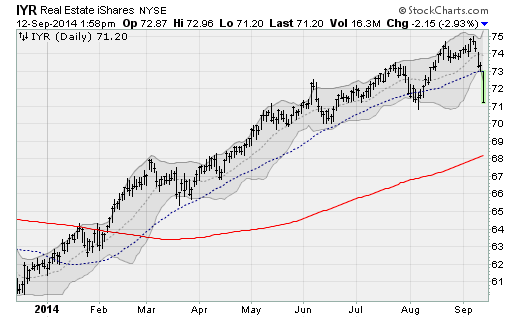Market braces for higher interest rates
The end of an era is coming -- and there's no stopping it.
I'm talking about the era of essentially free money (for big banks at least) that's been in place since 2008, when the Federal Reserve cut interest rates to near zero percent. But now the nation's unemployment rate has fallen to 6.1 percent, inflation is running near the Fed's two percent annual target, and the economy is shaking off global tensions and slowdowns in Europe and Asia. As a result, the Fed is preparing to tighten policy.
In other words, higher interest rates are coming -- and there's no stopping it.
That's the message from the bond market this week, where prices have been weakening and yields rising in anticipation of a hawkish Fed policy statement next Wednesday. The central bank continues to wind down its stimulus program, with monthly bond purchases set to end in October. And the timing and pace of short-term interest rates, based on a recent San Francisco Federal Reserve Bank research paper, is likely to be sooner and more aggressive than investors are ready for.
On Friday, with another batch of solid economic data including an in-line report on retail sales, the cheap-money junkies are slowly realizing there isn't really enough justification for the Fed to hold back on its tightening campaign any longer. That's resulting in yield-sensitive stocks getting hammered while bond prices are drifting lower.
You can see this in the way the iShares Barclays 20+ Year Treasury Bond (TLT) has scythed below its lower Bollinger Band -- a sign of extreme downside extension -- in a way that hasn't been seen since November (as shown above). The drop in T-bond prices has pushed the yield on 10-year Treasury notes to 2.61 percent, a level that hasn't been seen since July.
The dawning recognition that rate hikes are on the way is also hitting yield-sensitive stocks in areas like real estate and housing. The iShares Real Estate (IYR) is suffering its worst one-day loss during mid-day trading on Friday since June 2013.
And because of all this, the overall stock market is coming under pressure. The Dow Jones industrial average has lost the psychologically important 17,000 level on an intra-day basis for the fourth day in a row after spending the last four weeks repeatedly testing that level -- which was first crossed back in July just before the Independence Day holiday. For its part, the S&P 500 has spent most of the week below the 2,000 level, which was first crossed in late August.

